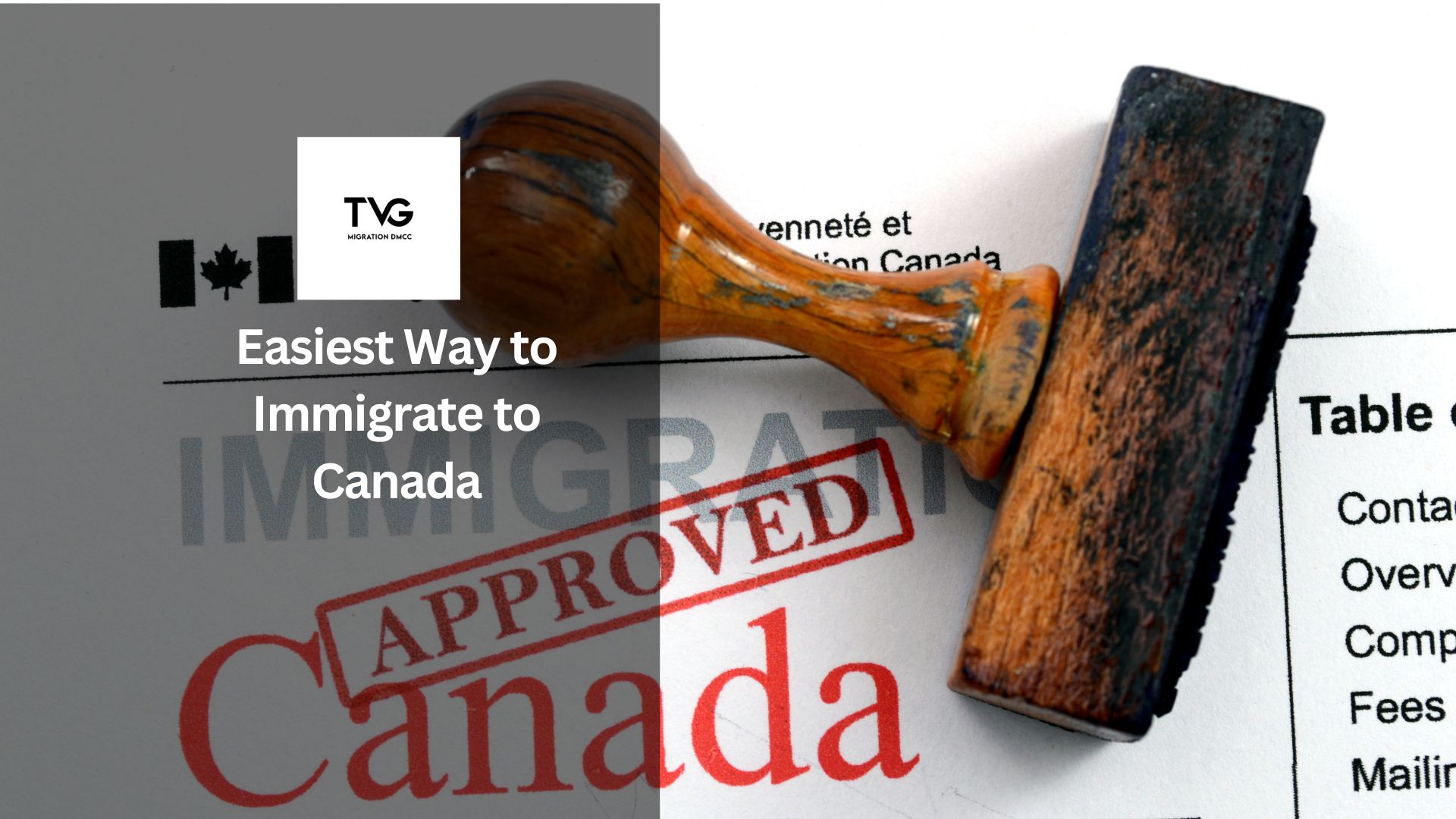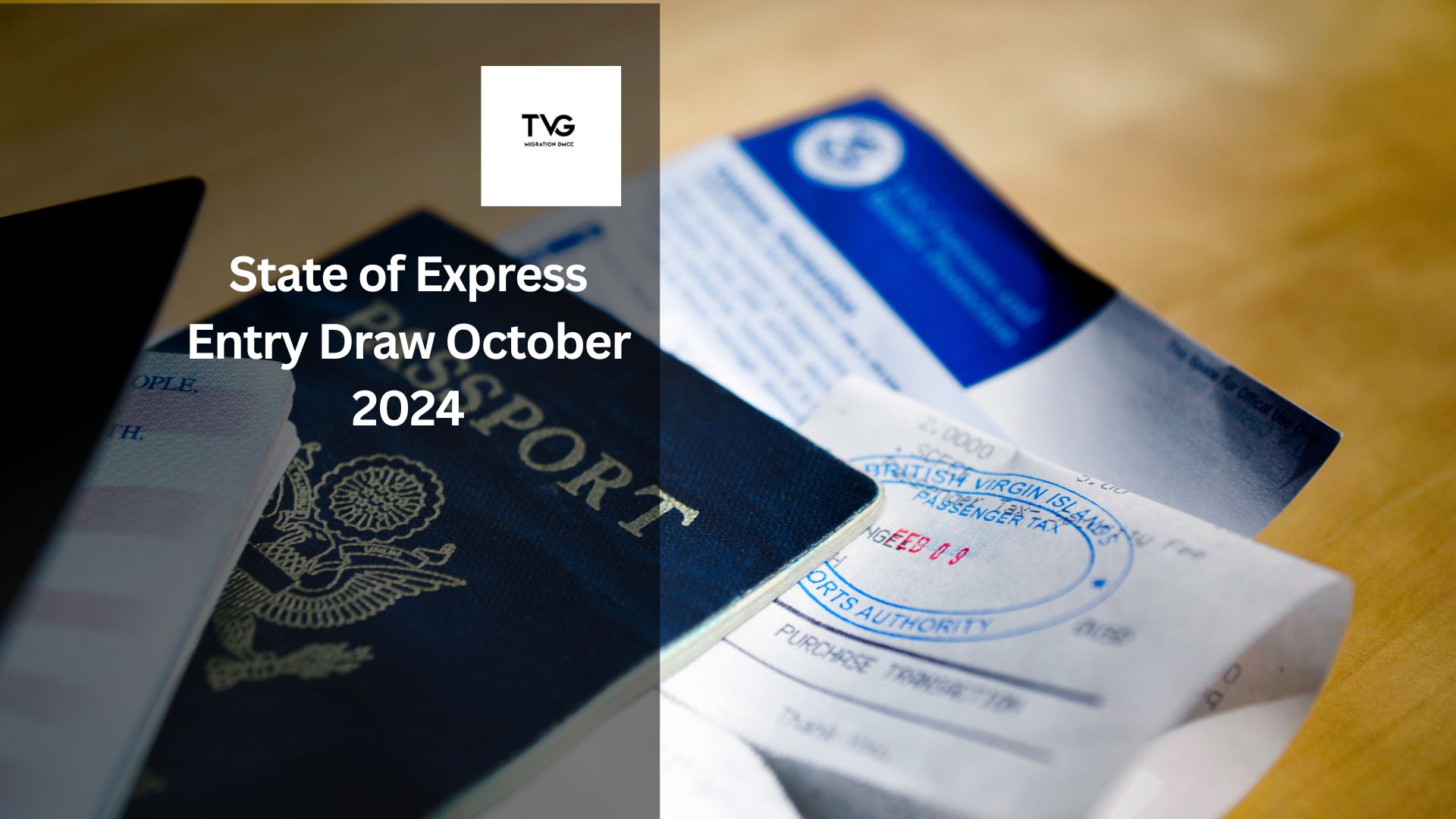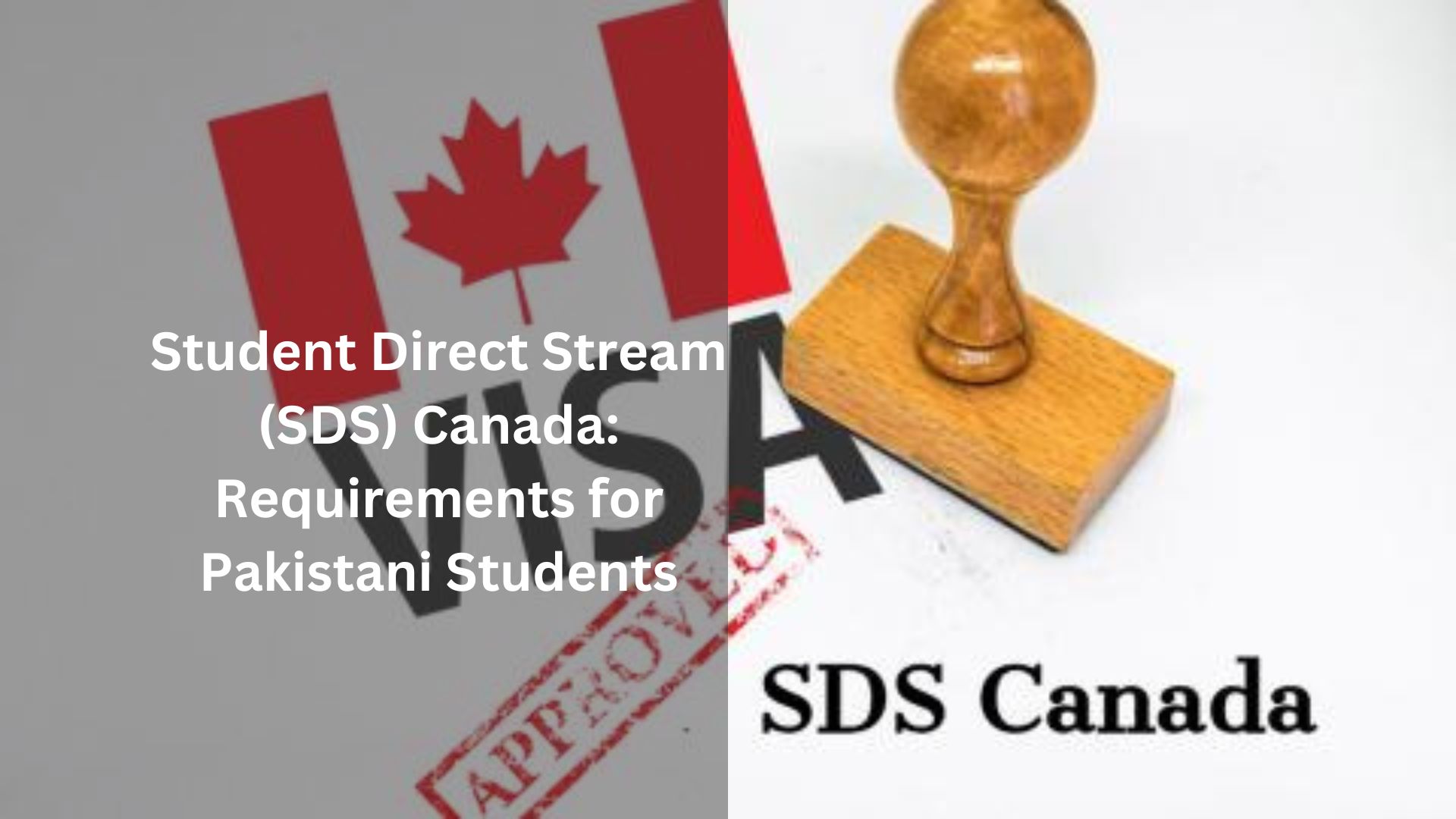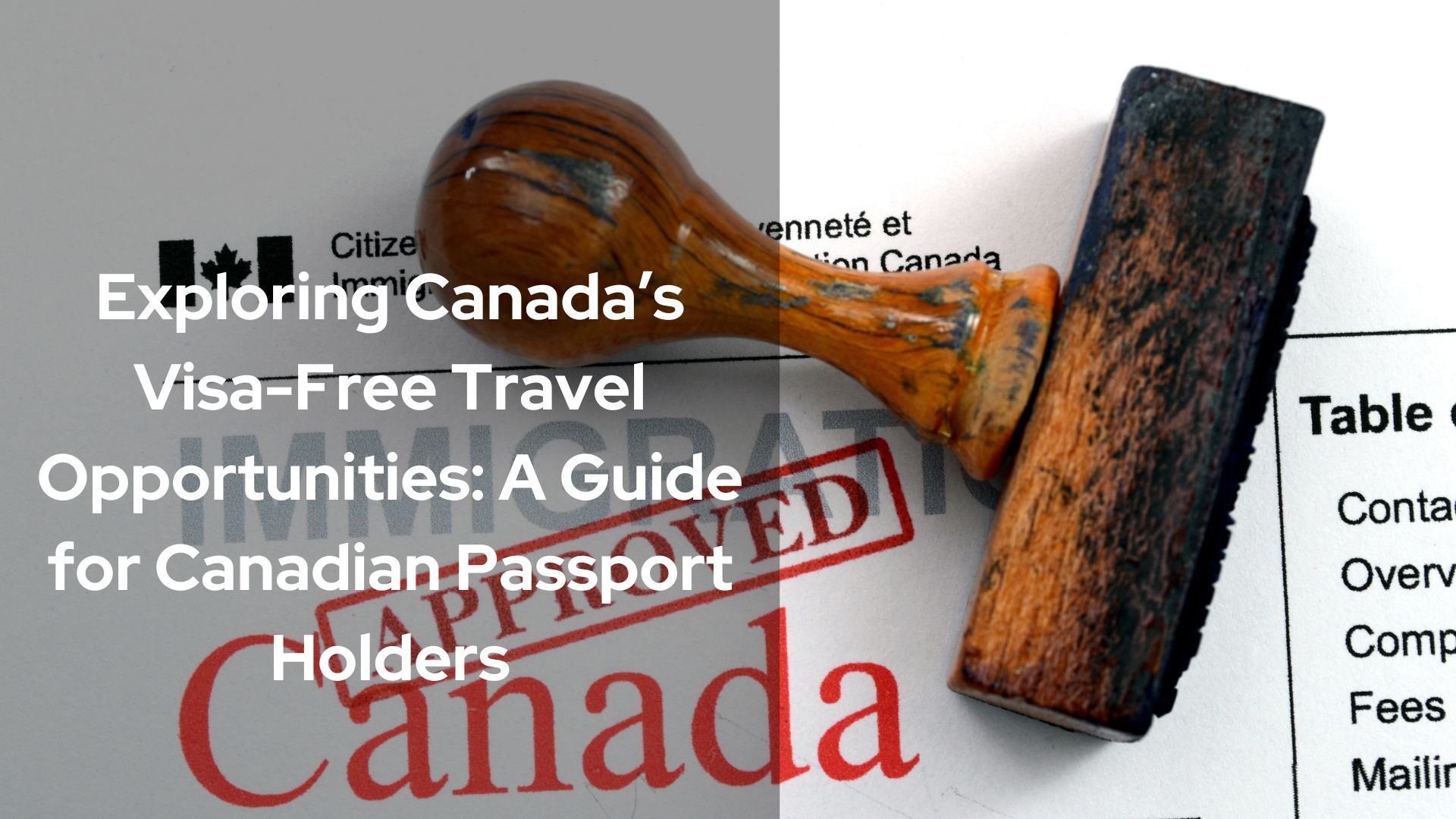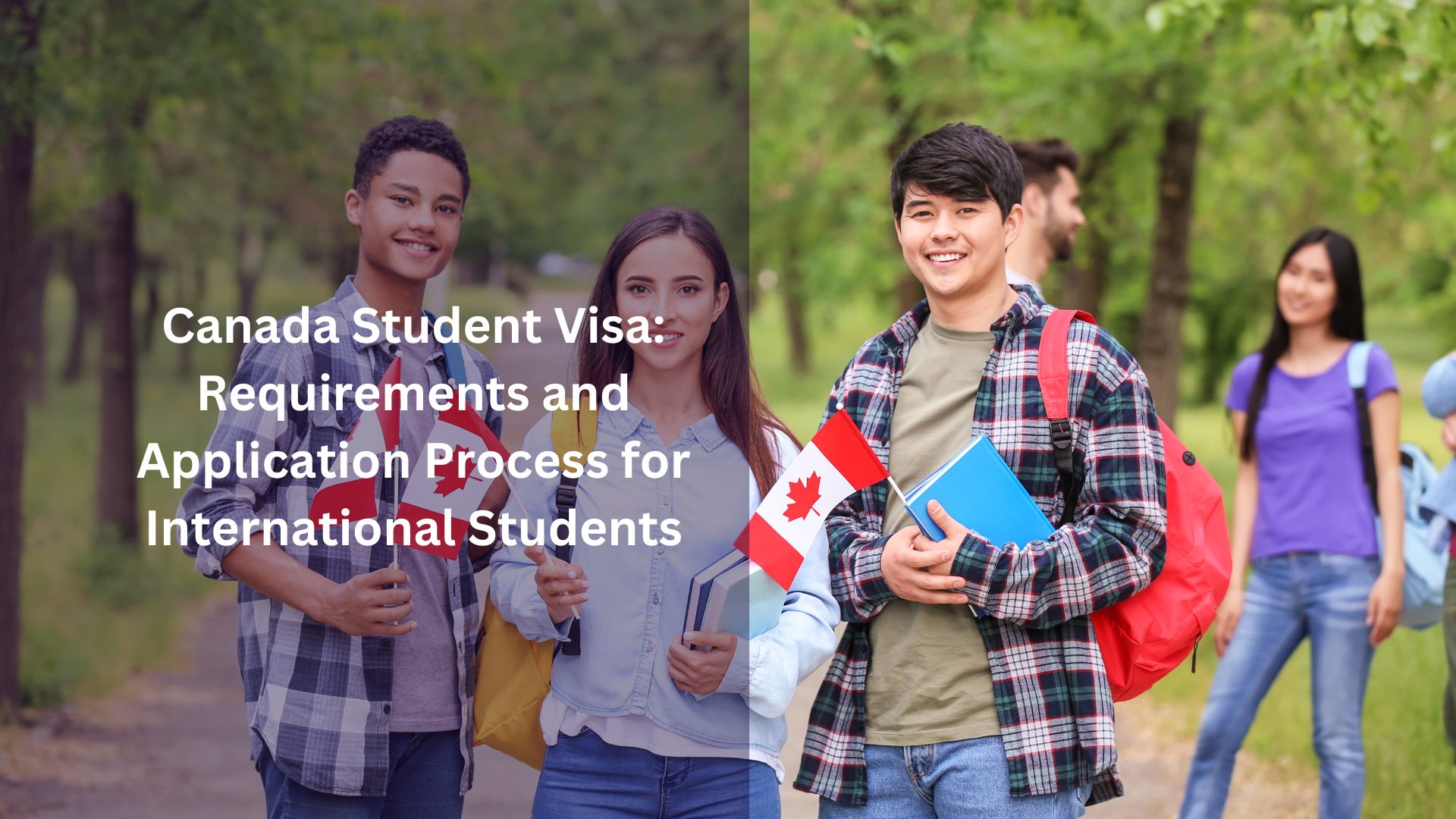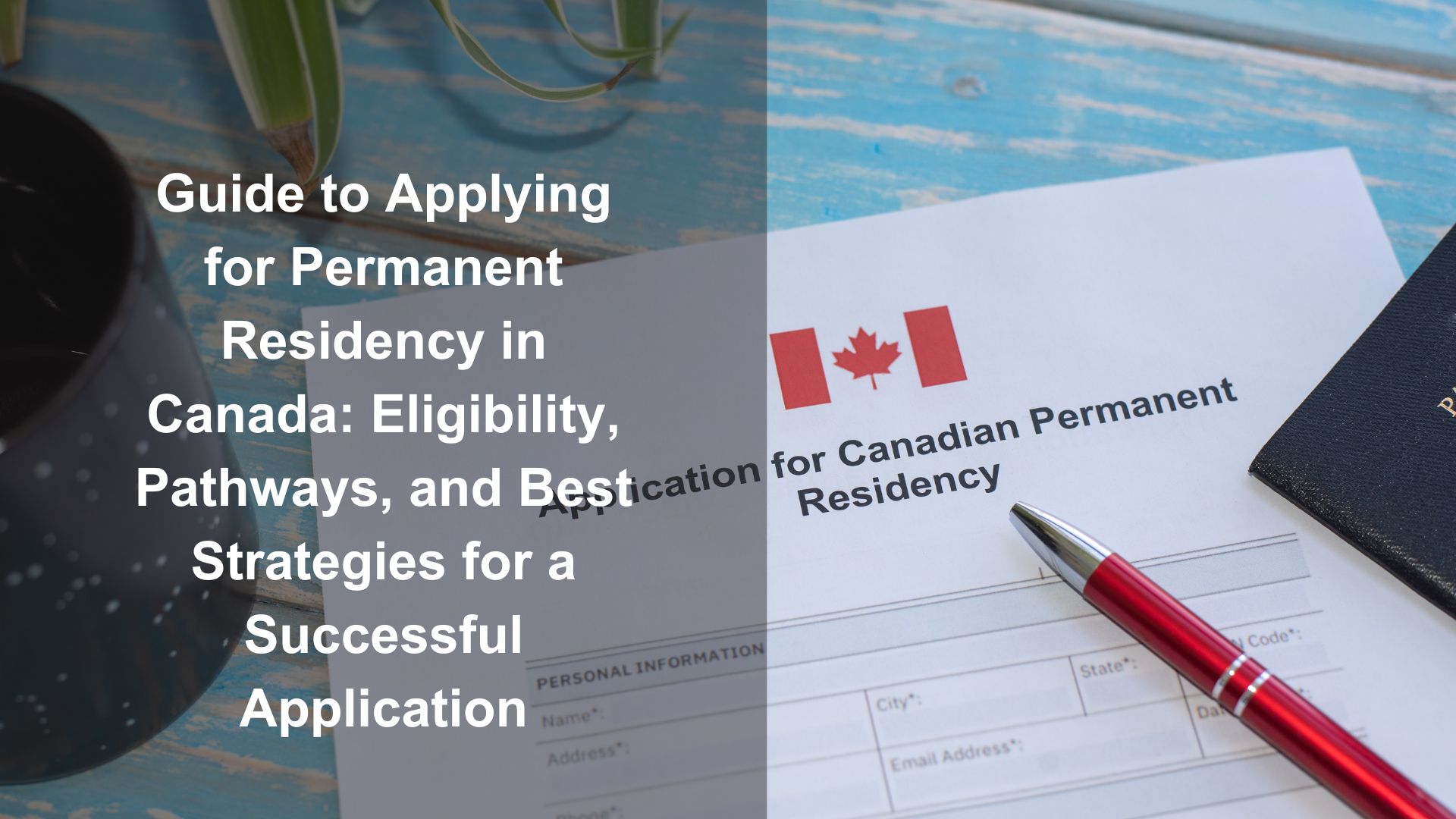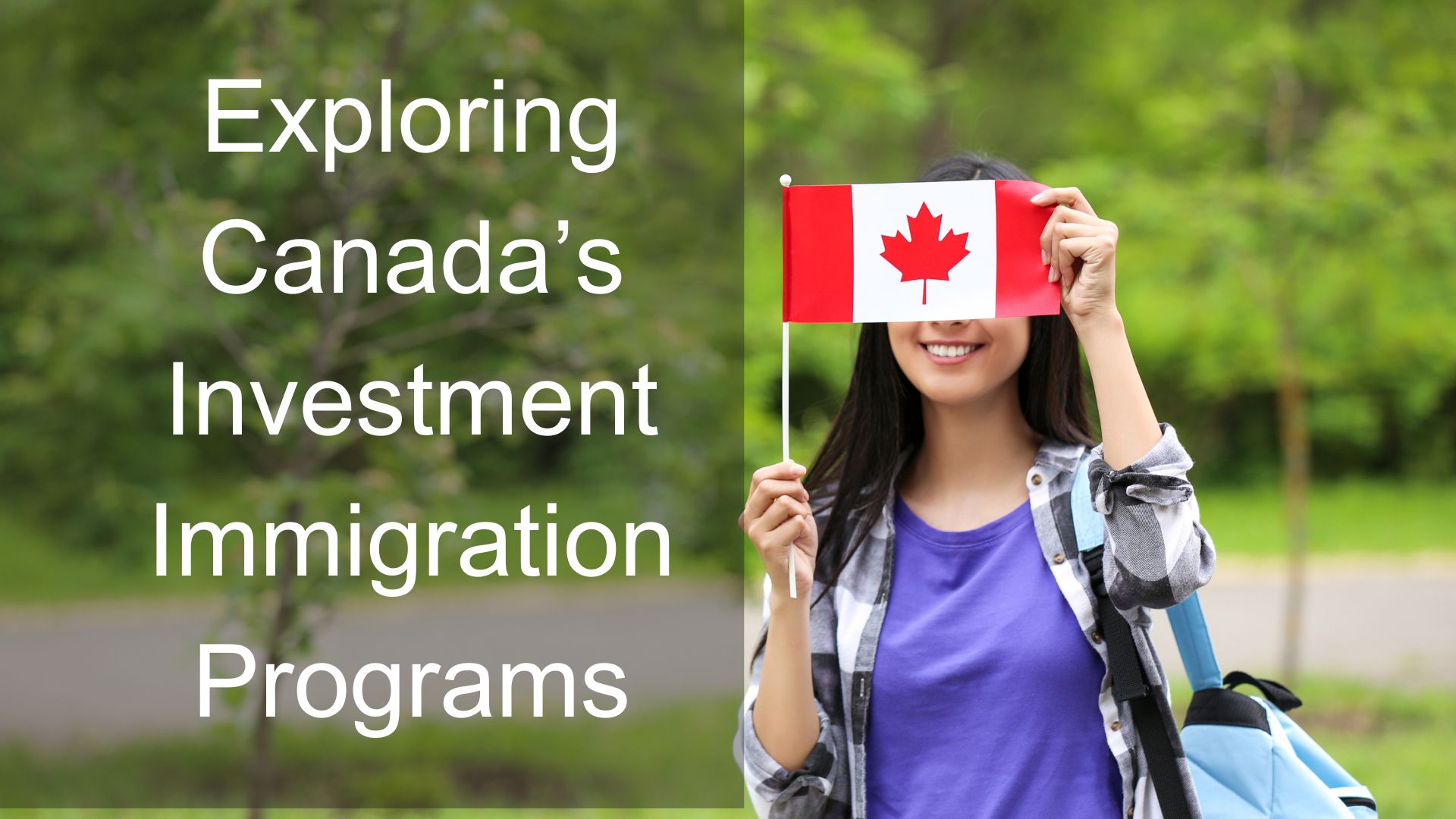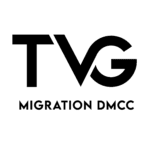Introduction Canada’s strong economy, excellent standard of living, and welcoming immigration laws continue to make it one of the most sought-after locations for immigrants. Though many people have the desire to go to Canada, it’s important to comprehend the cost considerations and the easiest immigration routes. We’ll go over the entire cost of immigration to Canada from UAE, the simplest immigration routes, and successful relocation planning in this extensive guide. Easiest Way to Get to Canada Immigrating to Canada can be simplified and efficient with the Express Entry System. Three categories make up this point-based system intended for competent workers: Program for Federal Skilled Workers (FSW) Canadian Experience Class (CEC) Federal Skilled Trades Program (FST) Candidates are chosen for Express Entry on the basis of their age, level of education, employment history, and fluency in either French or English. The greater your score in the Comprehensive Ranking System (CRS), the more favorable it is that you will be invited to apply (ITA) for citizenship. The Provincial Nominee Program is an additional, comparatively simple path (PNP). Each Canadian province and territory has an immigration program specifically designed to meet the demands of its labor market. You can submit an application for permanent residence after getting a nomination from a province. A few PNPs expedite the process by being in line with the Express Entry system. Canada Immigration Total Cost For financial planning to be successful, it is vital to comprehend the entire cost of immigration to Canada. These are the main costs; the actual price will depend on the immigration program and your unique situation. Fees for Express Entry Application The principal applicant’s express entry application fee, which also covers the right to permanent residence, is CAD 1,365. Application Fee for Spouse or Partner: CAD 1,365 Application Fee for Dependent Child: CAD 230 for each child Provincial Program Fees for Nominees There are extra provincial fees if you are applying through the Provincial Nominee Program. These differ according to the province: Ontario: $1,500 in Canadian dollars British Columbia $1,150 in CAD Alberta: No cost to nominate someone provincially Manitoba: $500 CAD Other Relevant Costs for Canada Immigration Language exams (CELPIP or IELTS): CAD 300–CAD 350, depending on the location and test center. CAD 200 to CAD 300 for the Educational Credential Assessment (ECA), depending on the organization you work with. Each medical examination costs between CAD 200 and CAD 500. Certificates of Police: Depending on your country, prices can differ, but they normally range from CAD 20 to CAD 100. The biometrics fee is CAD 85 for individuals and CAD 170 for families. How much is required for a Canada Visa? Subject to certain restrictions, foreign nationals with a permanent resident visa to Canada are able to work and dwell there for an unlimited period of time. The related expenses might range from CAD 100 to more than 2000, depending on the immigration program, the volume of applications, and the processing duration. The majority of fees are non-refundable, with the exception of the right of permanent residency fee for sponsored families. These fees consist of the application, interview, and legalization fees, among other costs. Additionally, take notice that as part of a routine update procedure, applicants for Canadian permanent residence will face higher expenses as of April 30, 2024. The impending fee adjustments, which will affect all applicants for permanent residence, demonstrate the Canadian government’s commitment to controlling immigration-related expenses while maintaining the sustainability of the particular Immigration Programs. However, It should be noted that the latest cost of Canada Permanent Residency is CAD 575 Approximately. Planning a Smooth Immigration to Canada? Although moving to Canada requires a substantial financial outlay, you may prepare for a seamless transfer by being aware of all the fees and selecting the most advantageous immigration route. With their simple application processes and quick processing times, the Express Entry and Provincial Nominee Programs are the most popular choices for most applicants seeking permanent status. To make sure you have the money necessary to begin your new life in Canada, consider the costs associated with moving, settlement funds, and visa processing as you get ready. At the same time, Expert Immigration professionals can help you achieve your dream of making Canada your second home.
Home – Best Canada & Australia Immigration Consultant in Dubai
Author: abhishek
State of Express Entry Draw October 2024
Introduction This year 2024, has witnessed a notable increase in activity on Canada’s Express Entry system. Through 42 draws so far, Immigration, Refugees, and Citizenship Canada (IRCC) has invited more than 89,035 people to apply for permanent status. This rise is a result of Canada’s robust economic expansion and its efforts to draw in highly qualified workers from around the world. In 2024, Canada’s Express Entry system will still be developing, with a distinct emphasis on addressing the demands of the labor market and economy. Several noteworthy draws were made in October 2024, focusing on Provincial Nominee Programs (PNPs) and high-demand industries. Latest Express Entry Draw Canada The Express Entry draw #319 was opened by the Canadian government on October 21, 2024. 648 Provincial Nominee Program (PNP) candidates were asked to apply for permanent residence in Canada in this fourth draw of October. This month’s second draw under the Provincial Nominee Program (PNP) category was held under this particular category. Skilled workers who have already received a provincial nomination and 600 points based on that are eligible for this category. Immigration, Refugees, and Citizenship Canada (IRCC) sent out 1,000 invites to permanent residency in a new Express Entry draw on October 10, 2024, focusing on profiles with a CRS score of 444 or higher and Level 7 in French. 500 Invitations to Apply (ITAs) for permanent residency were previously delivered by the IRCC on October 9 to candidates in the Canadian Experience Class (CEC) who scored at least 539 on the Comprehensive Ranking System (CRS). Additionally, on October 7, 1,613 individuals with a Comprehensive Ranking System (CRS) score of 743 or above were invited by the IRCC as part of the Provincial Nominee Program (PNP). Express Entry Draws September-October 2024 Key Insights of Express Entry Draw October 2024 Targeted Draws: The Canadian government has been using category-specific draws more and more, inviting applicants according to their province, occupation, or language proficiency. To meet urgent labor shortages, priority has been given to categories including healthcare, STEM (science, technology, engineering, and mathematics), and French-speaking applicants. Comprehensive Ranking System (CRS) ratings: In October 2024, the CRS ratings continued to be high, particularly for draws from the Provincial Nominee Program. For example, the PNP draw on October 24, 2024, required a minimum CRS score of 776, demonstrating how attaining the invitations has been more challenging than before. Enhanced Attention to Provincial Nominees: The PNP is still essential to Express Entry. By allowing provinces to propose applicants who satisfy particular labor market demands in their areas, these draws guarantee that immigration boosts local economies. No Program-Specific Draws: 3,725 applicants with a minimum CRS score of 500 were invited to a “no program specified” draw on October 10, 2024. This wide appeal is a reflection of Canada’s goal to lure in competent, varied workforce. Express Entry Canada Trends 2024 The focus of Canada’s immigration policy has shifted to talent pools that are sector-specific. The draws now particularly target high-demand professions including healthcare workers, STEM experts, and tradesmen according to category-based selection. Furthermore, Canada’s need to support French-speaking populations outside of Quebec means that French-speaking applicants continue to be a top priority. Express Entry Canada 2024 Canada’s strategic approach to immigration is shown in the October 2024 Express Entry draws, which prioritize addressing essential labor market openings while upholding competitive CRS score criteria. To effectively prepare for the immigration process, potential immigrants must monitor both category-specific drawings and general CRS trends.
ITA in Express Entry draw in October 2024
Introduction Invitations to apply (ITAs) for the latest Express Entry draw have been sent out by Immigration, Refugees, and Citizenship Canada (IRCC). In a draw that took into account applicants through the Canadian Experience Class (CEC), the government sent out 400 ITAs. To be eligible, candidates had to have a minimum Comprehensive Ranking System (CRS) score of 539.The Express Entry system in Canada kept up its speed in October 2024 by sending Invitations to Apply (ITAs) to applicants for permanent residence. With an emphasis on province nominees and specific occupations, the drawings were carefully matched with Canada’s economic requirements. Total ITAs issued in October 2024 In October, there were still a lot of ITAs overall, with several drawings in various categories. Highlights consist of: On October 10, 2024, 3,725 applicants with a minimum Comprehensive Ranking System (CRS) score of 500 were invited to a general “no program specified” draw. October 24, 2024: 1,548 ITAs with a noticeably higher minimum CRS score of 776 were issued in a Provincial Nominee Program (PNP) draw. Prior to this, on October 21, 2024, 648 invitations to permanent residency were sent to profiles with a CRS score of 791 or higher and a provincial nomination. Additionally, on October 7, 9, and 10, 3,113 invitations to apply (ITAs) for permanent residency were sent out. Category Specific Express Entry Draws Additionally, October featured category-specific draws aimed at highly trained workers in industries with strong demand, like: Healthcare: In response to Canada’s growing demand for personnel in this sector, a number of draws have targeted healthcare professionals. STEM (Science, Technology, Engineering, and Mathematics): Canada’s emphasis on creating a knowledge-based economy was furthered by inviting STEM personnel through targeted draws. French-speaking Candidates: For many candidates, being able to speak French was still a crucial selection factor, encouraging bilingualism and alleviating shortages in French-speaking areas outside of Quebec. The IRCC has decreased the frequency of category-based selection draws in recent months, and since a draw for candidates in healthcare occupations on July 5, there hasn’t been a category-based selection draw for any other category beyond French language competency. On the other hand, since July, the IRCC has issued 21,800 ITAs to candidates for the Canadian Experience Class (CEC), which has become more frequent throughout the summer. This is consistent with the IRCC’s declared goal of lowering the number of temporary residents in Canada and increasing the number of “domestic” draws. Additionally, this plan seeks to assist the department in achieving its annual goals for permanent residents. CRS Score Trends in Express Entry Draws 2024 The October CRS score thresholds demonstrated the Express Entry system’s continued competitiveness. High CRS cut-offs were a recurring element of Provincial Nominee Program drawings; the October 24 draw required a minimum score of 776. However, the October 10 “no program specified” draw had a more approachable CRS barrier of 500. Summary Canada’s Express Entry system issued a wide variety of ITAs in October 2024, with a focus on both broad and tailored strategies. Express Entry continues to offer a wide range of opportunities, regardless of your background—healthcare worker, STEM professional, or candidate who speaks French. To increase your chances of getting an ITA, continue to track CRS trends and look for patterns.
Student Direct Stream (SDS) Canada: Requirements for Pakistani Students
Introduction Canada’s excellent colleges, high standard of living, and post-study employment possibilities have made it a popular choice for students from all over the world for a long time. The Student Direct Stream (SDS) program in Canada provides a quicker and more efficient path to a study visa for students from Pakistan. This is all the information Pakistani students need to know about the SDS program and its prerequisites. What is Student Direct Stream (SDS) Canada? The Canadian government launched the Student Direct Stream (SDS), a unique program designed to speed up the application procedure for study permits for international students from particular nations, such as Pakistan. SDS is a desirable choice for students who want to begin their studies in Canada as soon as possible because it provides faster processing periods, frequently in less than 20 days. Student Direct Stream Canada Pakistan Requirements Pakistani students who wish to apply under the SDS program must fulfill specific eligibility requirements. The following is a list of the essential paperwork and requirements you must meet: Acceptance Letter A current admission letter (LOA) from a Canadian Designated Learning Institution (DLI) is required. Schools designated as DLIs have the approval of a province or territory government to accept foreign students. Documentation of English Language Ability You must take an approved language test to prove that you can communicate in English. The following scores are necessary for SDS applications: A minimum of 6.0 in each of the four IELTS Academic skills (listening, reading, writing, and speaking) is required. It’s crucial to remember that the SDS program only accepts IELTS as of right now as a language test. Certificate of Guaranteed Investment (GIC) You have to buy a $10,000 CAD Guaranteed Investment Certificate (GIC) from a Canadian financial institution that is involved. The GIC makes sure you have enough money for living expenses during your first year in Canada. Payment of Tuition In order to enroll in a Canadian university for the first year of study, you must show that your tuition has been paid. Usually, you can accomplish this by presenting a bank transfer or submitting a DLI receipt. Instructional Materials To demonstrate your eligibility for the selected program of study, you will need to provide transcripts, diplomas, or certificates from your prior academic institutions. Direct Medical Exam Prior to completing their SDS application, Pakistani students must have a medical checkup performed by a physician who has been approved. By doing this, processing times are accelerated and future delays are avoided. Biometric Proof When submitting an application for a visa, you must include biometric data (a picture and your fingerprints). After submitting your application, remember to set up a time for the biometrics collection. A current passport Make sure your passport is valid for the whole time you’ll be studying because you’ll need it to apply for a study permit. Cost for Applying Under Student Direct Stream The $150 CAD government processing charge is the same as that of a standard study permit. In addition, applicants must pay the $85 CAD biometrics charge, if applicable. Students must provide documentation proving they have paid their first year’s tuition and have a GIC of $20,635 CAD in addition to the government processing fees. Conclusion Students from Pakistan have a great chance to expedite the application procedure for a study permit and pursue higher education in Canada through the Student Direct Stream (SDS). You can expedite your application process and start an exciting academic career in Canada by fulfilling the essential prerequisites, which include a valid LOA, GIC, IELTS score, and tuition payment. To make sure your documentation and application fulfill all the requirements, think about speaking with an immigration specialist for professional advice and assistance with your SDS application. Are you prepared to move forward with your SDS studies in Canada? Today, let your aspirations take you to your land of dreams. FAQs Can you Apply for the SDS Program if the requirements for IELTS are not met? No, the SDS program requires that applicants meet the IELTS proficiency level of 6.0 in each skill. You can apply through the standard study permit process if you don’t meet this requirement. Can you get Permanent Residency through SDS Program Canada? If foreign students wish to stay in Canada, it is simple for them to become permanent residents. International students may remain in Canada and work for a maximum of three years following graduation with the Post-Graduate Work Permit. International graduates may be qualified to seek for permanent residency after one year of employment in Canada. What if your study permit is rejected for the SDS program? You can reapply or look into other visa alternatives if your SDS application is denied. In the new application, it is imperative to address the reasons for rejection.
How to Track Your Canada Visa Application: A Guide to Checking Status and Updates
Planning a trip to Canada? The good news is that you may easily and conveniently check the status of your Canada visa online from the comfort of your home or any other location. Fortunately, there are multiple ways to track the progress of your visa application and remain informed thanks to Canada’s immigration system. In this guide, you will find a step-by-step guide through the process of tracking your visa application. Canada Visa Application Tracking Online Here’s a quick, step-by-step tutorial on how to use the online Canada visa application status checker. Step 1: First, go to the official website. Visit Immigration, Refugees and Citizenship Canada’s (IRCC) official website. This is the main website for all services pertaining to immigration. Step 2: Open a Web Account You must register for an online account on the IRCC website if you haven’t already. You can follow your application and get updates with this account. Use a legitimate email address, and make sure your password is strong. Step 3: Open your account and log in. After creating an account, enter your login information to log in. To view the details of your application, you must enter your username and password. Step 4: Go to the Section on Application Status Locate the part where you can check the status of your application after logging in. Usually, a tab with the title “Check your application status” or a similar one has this. Step 5: Provide the Necessary Data To check your status, you will need to supply certain essential information. This usually contains your passport number, application number, and other private information like your name and birthdate. Ensure that you have these particulars at hand. Step 6: Check Your Status After completing the required fields, send in your request. Your application’s current status will be shown by the system. For notices and updates, frequently check this section. Study Permit Tracking Through their IRCC account, applicants for study permits can monitor the status of their applications. Study permits might take anywhere from six to twelve weeks to process, depending on the nation where the application is being submitted. Permanent Resident Card Application Status Express Entry petitions for permanent residency typically take six months to process, whereas Provincial Nominee Program (PNP) applications might take up to nineteen months. Using your IRCC account or the Express Entry portal, you can monitor the status of your application. How to Check Canada Visa status with Visa number? You may also use your passport number to find out the status of your visa. Take these actions: Go to the official immigration website of Canada. Proceed to the section for tracking visa applications. Your passport number should be entered in the designated field. Fill out the form and wait for a status update on your visa. Delays or Rejections The Canadian embassy or consulate should be contacted first if your visa application is denied or delayed. Give them the specifics of your application and request an update. Examine your application carefully to find any flaws or missing papers if it is rejected. To find out why you were rejected, you can also get feedback from the embassy or consulate. If your visa is rejected, you can reapply after correcting the reasons that led to the rejection. Make sure your fresh application is correct and comprehensive. If you see Professional assistance, it can assist you navigate the procedure, steer clear of typical mistakes, and improve your chances of getting approved. Conclusion Following up on your application for a Canada visa is essential if you want to know how it’s doing and make sure you’re ready for any necessary next steps. You can monitor the status of your application by following the instructions in this guide, regardless of whether you applied online, through a Visa Application Center (VAC), or on paper. You can expedite the process and swiftly address any potential delays by being aware of the available tracking tools and techniques, which include your IRCC account, VFS Global’s tracking tool, and email notifications.
Exploring Canada’s Visa-Free Travel Opportunities: A Guide for Canadian Passport Holders
Canada’s passport is recognized globally for its strength and the ease it offers its holders in international travel. Whether you’re a frequent traveler, a digital nomad, or planning your next vacation, understanding the Canada visa-free countries and the visa requirements for Canadian citizens can make your travel planning much smoother. This blog delves into the Canada passport visa-free countries, visa requirements for Canadian citizens, and offers a comprehensive guide to the Canada free visa destinations. Understanding Canada’s Passport Power A Canadian passport is one of the most powerful travel documents in the world. As of 2024, it ranks 8th globally, allowing access to numerous countries without the need for a visa or with visa-on-arrival or electronic travel authorization (eTA). This ease of access is a significant advantage for Canadian travelers, making it easier to explore new cultures, conduct business abroad, or simply enjoy a hassle-free vacation. What Does Visa-Free Travel Mean? Before diving into the list of Canada visa-free countries, it’s essential to understand what visa-free travel entails. Visa-free travel means that Canadian passport holders can enter a foreign country without obtaining a visa beforehand. However, this does not always mean unrestricted access. Some countries may impose certain conditions, such as a limited stay duration or specific entry points. Additionally, visa-free does not necessarily mean that Canadians are exempt from all travel requirements. Some countries may still require travelers to have a return ticket, proof of sufficient funds, or specific vaccinations. Therefore, it’s crucial to check the entry requirements of your destination even if it is a Canada free visa country. Canada Visa-Free Countries: Where Can Canadians Travel Without a Visa? The list of Canada passport visa-free countries is extensive and covers various regions worldwide, from Europe to Asia, the Americas, and beyond. Below is a detailed look at some of the most popular visa-free destinations for Canadian citizens: 1. Europe Europe is one of the most accessible regions for Canadians, with many countries offering visa-free access. This is particularly beneficial for those looking to explore multiple countries within the Schengen Area, where a Canadian passport allows for travel across 27 countries without a visa for up to 90 days within a 180-day period. France: Enjoy the romance of Paris or the beauty of the French Riviera without worrying about a visa. Germany: Explore Berlin’s history, Bavaria’s landscapes, and much more with ease. Italy: Whether it’s the ancient ruins of Rome or the canals of Venice, Italy is open to Canadians visa-free. Spain: From Barcelona’s architecture to Madrid’s vibrant culture, Spain welcomes Canadians without a visa. 2. Asia While Asia is known for its diverse cultures and landscapes, not all countries offer visa-free entry to Canadians. However, several popular destinations do provide this privilege: Japan: Canadians can stay in Japan for up to 90 days without a visa, making it perfect for exploring its mix of traditional and modern attractions. South Korea: A visa-free stay of up to 180 days is available for Canadians, allowing ample time to explore Seoul’s urban landscapes and Korea’s historic sites. Singapore: Known for its cleanliness and modern architecture, Singapore offers a visa-free stay for up to 30 days. 3. The Americas Travel within the Americas is relatively straightforward for Canadians, with many countries offering visa-free access or visa-on-arrival. Mexico: Canadians can enjoy a visa-free stay of up to 180 days, perfect for exploring its beaches, cities, and cultural sites. Costa Rica: Known for its eco-tourism, Costa Rica offers Canadians a visa-free stay of up to 90 days. Panama: Canadians can enter Panama without a visa for stays up to 180 days, making it a great destination for both tourism and business. 4. Africa Africa’s visa policies vary widely, but several countries do offer visa-free or visa-on-arrival access for Canadian passport holders. Morocco: Canadians can stay visa-free for up to 90 days, allowing time to explore its rich culture and landscapes. South Africa: Visa-free travel is available for up to 90 days, perfect for exploring its diverse cities and natural wonders. Mauritius: This island nation allows Canadians to stay visa-free for up to 90 days, ideal for a tropical getaway. 5. Oceania The Pacific islands and countries in Oceania also offer several visa-free options for Canadians: Australia: While not entirely visa-free, Canadians can apply for an Electronic Travel Authority (ETA) online, which is a quick and simple process. New Zealand: Similar to Australia, Canadians can apply for an NZeTA (New Zealand Electronic Travel Authority), which allows visa-free travel. Fiji: Canadians can stay in Fiji for up to 4 months without a visa, making it a perfect destination for beach lovers. Visa-on-Arrival and eVisa Options for Canadian Citizens In addition to Canada passport visa-free countries, several countries offer visa-on-arrival or eVisa options, which are almost as convenient. These visas are usually easy to obtain at the point of entry or online before traveling. Visa-on-Arrival Countries Visa-on-arrival means you can obtain your visa at the airport or other entry points upon arrival in the country. Some popular destinations include: Indonesia (Bali): Canadians can obtain a visa on arrival for up to 30 days, perfect for those looking to enjoy Bali’s beaches and culture. Nepal: Canadians can get a visa on arrival, making it easier to explore the Himalayas and cultural sites. Jordan: Visa on arrival is available, allowing Canadians to explore Petra and the Dead Sea. eVisa Countries An eVisa is an electronic visa that can be applied for online before your trip. This process is usually straightforward and allows for quick entry upon arrival. India: Canadians can apply for an eVisa online, which is valid for tourism, business, or medical visits. Turkey: An eVisa for Turkey is available online, allowing Canadians to explore Istanbul and beyond. Vietnam: Canadians can apply for an eVisa to visit Vietnam, simplifying the process of exploring this beautiful Southeast Asian country. Visa Requirements for Canadian Citizens: What You Need to Know While many countries offer visa-free or visa-on-arrival entry, there are still several countries where visa requirements for Canadian citizens
How to Apply for a Canada Tourist Visa from Dubai: A Step-by-Step Guide for UAE Residents
For travel, business, or just seeing family and friends, Canada is a favorite destination for inhabitants of the United Arab Emirates. Thankfully, acquiring a Canada visa from Dubai or other UAE cities is a reasonably simple process. Everything you require to apply for a visa to Canada from the United Arab Emirates will be covered here. The Temporary Resident Visa (TRV), commonly referred to as the Canada Tourist Visa, enables you to go to Canada for business, pleasure, or to see loved ones. The normal validity period is six months, and you ought to depart Canada before the visa expires. The type of visa—single or multiple entry—will depend on your intended route and the officer processing your application. Canada Tourist Visa from Dubai Visitors from the UAE can enter Canada without a visa thanks to The eTA, or electronic travel authorization. This document circumvents the need to apply for a visa in advance of visiting the nation; it is a visa waiver. An eTA holder is permitted to enter Canada several times for a maximum of six months at a time. This implies that they can use the same eTA to quit and return multiple times. Depending on their specific needs, a UAE person with this visa waiver is allowed to enter the nation for transit, business, or tourism. How to Apply for a Canada Visa from the UAE? Be sure you meet the prerequisites for a Canada visit visa from dubai before beginning your application: For the whole time you will be visiting Canada, your passport must remain valid. Clearly indicate why you are there, be it for business, tourism, or family visits. You must provide evidence that you have enough money to pay for all of your expenses while you are visiting Canada. To reassure the visa officer that you will return to Dubai after your visit, you must demonstrate substantial ties to the UAE, such as employment, family, or property. You must be of excellent character and possess a spotless criminal record. Requirements for Canada Tourist Visa from Dubai Getting all the paperwork you need for your visa application is the next step. This is a list of the necessary items: Completed Application Form (IMM 5257): This form serves as the foundation of your application and contains vital travel-related data. Enclose copies of the biographical page and any pages bearing stamps or visas in your passport. Two passport-sized images that satisfy the photo criteria for a Canadian visa. Pay stubs, bank statements, or any other paperwork proving you have the money to sustain yourself while there. If appropriate, a letter of invitation from relatives or friends can help your application stand out if you’re visiting them. A summary of your vacation arrangements, such as reservations for flights, lodging, and activities. A letter outlining your travel or friend/family visitation itinerary in Canada. A letter of employment, proof of property ownership, or any other evidence of UAE ties. If applicable, copies of visas and stamps from prior trips. Include an invitation letter from the family or friends you are visiting if necessary. Biometric Information for Canada Visa Dubai Applicants may occasionally be asked to submit biometric information, such as a photo and their fingerprints. Make an appointment for biometrics at the specified Canada Visa Application (CAV) in Dubai, and remember to bring the required paperwork and identification. Process & Passport Submission for Canada Visa Dubai Following the submission of your application and, if necessary, the completion of the biometrics process, you will have to wait for the outcome about your Canada visitation visa. It’s best to check the official website for projected processing times as the time can change. You can use the special tracking number issued to check the status of your application online. You will be informed when it is time to pick up your passport and visa. Bring the required paperwork when you visit the visa application center during the hours set aside for collection. Depending on the type of visa, the applicant’s nationality, and the season, there can be variations in the processing time for a Canada visa application. A Canada visa application can often be processed in a few weeks to many months. On the other hand, expedited processing can be available to some candidates, which can cut down on processing time considerably. For the most recent information on processing timeframes, it is recommended to visit the official website of the Canadian government. Conclusion A number of procedures must be followed in order to apply for a tourist visa to Canada from Dubai, including thorough preparation and documentation. You may improve your chances of getting a visa by making sure you meet all eligibility requirements, obtaining the required paperwork, and carefully following the application procedure. If you plan ahead and pay close attention to details, you should have no trouble getting a tourist visa to Canada and having a wonderful time when you visit. Happy travels!
Canada Student Visa Requirements and Application Process for International Students
For international students looking for a top-notch education and a varied cultural experience, Canada is one of the best options. The nation appeals to those wishing to study abroad because of its strong educational system and friendly attitude toward foreign students. However, you must first secure a Canadian study permit, commonly referred to as a student visa, before starting your academic career in Canada. This blog will walk you through the steps of applying for and receiving a student visa for Canada. Canada Student Visa The Canadian government issues a document known as a study permit, or a Canada student visa, which permits foreign citizens to enroll in classes at approved learning institutions across the country. Any course or program that lasts longer than six months must have this permission. Depending on your place of origin, you might additionally require an Electronic Travel Authorization (eTA) or a Temporary Resident Visa (TRV) in addition to your study permission in order to visit Canada. Requirements for International Students A Canadian student visa application requires that you fulfill specific qualifying requirements. Below is a summary of the essential requirements: You need to obtain a letter of acceptance from a Canadian DLI before submitting an application for a study permit. A DLI is an establishment that has been granted permission by a provincial or territorial government to accept foreign students. You must provide proof that you have the funds necessary to pay for your tuition, living expenses for you and any family members traveling with you, and return transportation. The minimum amount needed as of 2024, excluding tuition, is roughly CAD 10,000 for living expenditures outside of Quebec and CAD 11,000 for those in Quebec. You might need to present a police clearance certificate as proof that you have a clean criminal record. To make sure you are in excellent health, you might need to get a medical checkup, depending on your country of residency and recent travel history. The visa officer has to be persuaded that you plan to depart Canada after your studies are finished. Although many students use post-graduate work permits and immigration routes to remain in Canada after graduation, your primary goal should be to return home. Although it’s not usually required, demonstrating your fluency in any of the official languages of Canada—French or English—can improve your application. As part of their admissions process, the majority of DLIs demand documentation of language competency (such as IELTS, TOEFL, or TEF). Regular Stream Student Visa Canada Study permits for some overseas students can be processed more quickly thanks to Canada’s Student Direct Stream, also known as SDS Canada. Within 20 days, the majority of SDS applications are processed. A resident of one of the aforementioned nations is required in order to qualify for SDS. The individual also has to possess the following necessary paperwork: Letter of acceptance from a Canadian Designated Learning Institution (DLI) Confirmation of upfront medical exam paperwork A $10,000 Canadian guaranteed investment certificate (GIC) Evidence of payment for the first year’s tuition at a Canadian university Verification of high school graduation using a Canadian curriculum or results from a language exam demonstrating one of the following: A minimum of six points in each IELTS category Common Challenges and Successful Tips for Canada Visit Visa To prevent delays, begin your application procedure well in advance. Make sure every document you have is correct and comprehensive. Provide comprehensive evidence of your ability to make ends meet. Add all of your funding sources, including savings, grants, and family financial assistance. If you don’t speak English or French as your first language, you should enroll in language classes to fulfill your selected DLI’s criteria. If you have any questions concerning the application procedure, you should speak with an immigration counselor or attorney who focuses on Canadian visas. Canada Student Visa Validity A student visa to Canada is only good for the duration of the program plus an extra ninety days. You can use these ninety days to either apply to extend your study permit in Canada or to get ready to leave the country. You will therefore need to extend your study permission if you don’t finish your program within the allotted period. You only get an extra ninety days if you finish the program before the study permit expires, after which you have to leave Canada. Conclusion The multi-step application process for a Canada student visa necessitates meticulous planning and attention to detail. You can improve your chances of having your application accepted and start an exciting new educational experience in Canada by following the instructions provided in this guide. Canada is a great place for international students to further their academic and professional ambitions because of its top-notch educational system, energetic multicultural atmosphere, and abundance of post-graduation options.
Guide to Applying for Permanent Residency in Canada: Eligibility, Pathways, and Best Strategies for a Successful Application
Canada is widely recognized for its hospitable approach to immigration, providing diverse avenues for individuals worldwide to obtain permanent residency (PR). Along with access to healthcare and other social benefits, becoming a permanent resident of Canada grants you the freedom to live, work, and study anywhere in the country. Getting permanent residence in Canada is often the first step towards obtaining citizenship. But the procedure might be intricate, necessitating a thorough comprehension of the prerequisites, accessible routes, and tactics for a successful application. This blog provides a guide to applying for permanent residence in Canada. What are the ways to Immigrate to Canada? Express Entry The Express Entry procedure is a well-liked entry route into Canada. It’s the quickest route to the Great White North, with processing taking only six months. If you apply using the Express Entry system, you can choose from three government programs related to economic immigration: For skilled workers holding a degree from an accredited university, there is the Federal Skilled Worker Program (FSWP). You must speak one or both of the official Canadian languages fluently and have relevant job experience. For experienced craftspeople with a recognized diploma or job-specific training, there is the Federal experienced Trades Program (FSTP). You have to speak one or both of Canada’s official languages fluently. Skilled workers who have been in Canada for a minimum of 12 months on a study permit, work permit, or working holiday visa are eligible for the Canadian Experience Class (CEC) program. You will need to have the language proficiency required for your line of work, just like for the other two programs Provincial Nominee Program The PNP gives Canadian territories and provinces the authority to designate people who want to come to the country and settle in a particular province. Every province has its own standards, frequently based on the demands of its labor market. PNPs can function as independent streams or be matched with Express Entry. Quebec Skilled Workers Program (QSWP) The Federal Skilled Worker program offered by Express Entry has a Quebec counterpart called the Quebec Skilled Worker Program (QSWP). It was intended to enable families of highly skilled overseas workers to become permanent residents of Quebec. The application will assess your profile based on predetermined standards to determine how much of an impact you will have on Quebec’s economy and culture. Start Up Visa Program Entrepreneurs with the abilities and ability to launch ground-breaking companies in Canada are the focus of this program. In addition to meeting the necessary linguistic and financial standards, applicants must have the backing of a recognized organization in Canada. Atlantic Immigration Program The Atlantic Immigration Pilot, now known as the Atlantic Immigration Program, was created to give people with the necessary skills in in-demand occupations a route to Canada’s Atlantic Provinces. Therefore, you’ll discover that every province—including Nova Scotia, New Brunswick, Prince Edward Island, and Newfoundland & Labrador—has an abundance of opportunities if you’d like to live and work there. How to Apply for Permanent Residency? Demonstrating your proficiency in one of the official languages of Canada. The results of your International English Language Testing System (IELTS) test must be provided. If you apply through the Federal Skilled Workers Program, submitting an Education Credential Assessment (ECA). Possessing enough money to back your application Presenting evidence of education if an ECA is not required Age verification, like a birth certificate Employment records, such as a pay stub, reference letter, and job offer Certificate of Medical and Police Clearance Your passport is your travel document. Best Strategies for a Successful Application If you are applying through the Canada Express Entry Program, It is important to focus on improving the CRS Score. The CRS score can be improved by obtaining a Job offer in Canada, improving your test score, securing a provincial nomination and gaining more work experience. Immigration rules and regulations can be complicated. You may make sure your application is as solid as possible, prevent frequent blunders, and navigate the process more easily by hiring a professional immigration counselor or attorney. Immigration laws and regulations in Canada are subject to change. Keep yourself updated on any changes that can impact your application process or eligibility. Conclusion Applying for permanent residence in Canada is a big step that needs to be planned carefully, thoroughly prepared, and aware of the possible pathways and eligibility requirements. Selecting the appropriate immigration program, assembling the required paperwork, and using astute tactics will improve your chances of having your application accepted. Whether your goal is to establish a new life in Canada as an entrepreneur, skilled worker, or through family sponsorship, this guide offers a strong foundation to assist you confidently navigate the process.
Exploring Canada’s Investment Immigration Programs: Pathways to Residency and Citizenship through Business and Property Investments
Obtaining permanent residence in Canada is a dream for individuals everywhere. The good news is that investing can help you achieve it. The Canada investment visa provides investors and businesses with a number of options. Let’s dive into the requirements, expenses, and application process for some well-known programs, such as the Start-Up Visa and the Quebec Immigrant Investor Program. With the evolving Canada family immigration policy, you might be closer to obtaining Canadian citizenship by investment or residency than you realize. Key Takeaways Canada Investment Immigration programs in Canada include the Quebec Immigrant Investor Program, the Start-Up Visa, and Provincial Nominee Programs. All of these programs provide unique routes to permanent residency and eventual Canadian citizenship. A minimum investment and other requirements must be met, as well as documentation, financial requirements, and management experience requirements. Investors can obtain Canadian citizenship by becoming a permanent resident of Canada for three of the five years, meeting the requirements for management experience, having legally obtained assets worth $2,000,000 CAD, and meeting educational and language requirements. Investment Migration to Canada Every Investment program has unique prerequisites and rewards that are customized for the individuals it hopes to attract. A distinct route to permanent residency and eventual citizenship is provided by each program, which ranges from the Quebec Immigrant Investor Program to the Start-Up Visa and Provincial Nominee Programs.These programs assist in investment migration to Canada and are always evolving along with the global business landscape. The Start-Up Visa Program, for instance, aims to draw in international entrepreneurial talent in order to promote innovation and boost economic growth in Canada. Start Up Visa Program The Start-Up Visa Program is designed for immigrant entrepreneurs who possess the abilities and ability to establish creative Canadian enterprises that can compete internationally and employ Canadians. This visa requires the fulfillment of four requirements. Possess a letter of support from a venture capital fund, business incubator, or group of angel investors. The ownership requirements for a qualifying business must be met by you. In order to fulfill the language requirement, you must receive a score of (CLB) 5 in each of the four categories for either French or English. Before you start working, you must have enough money to cover your living expenses and settle in. It is possible to have up to five founding partners with the start-up visa. Quebec Entrepreneur Program Entrepreneurs looking to start or buy a firm in the province of Quebec are the target audience for the Quebec Entrepreneur Program, an immigration initiative. There are two streams within this curriculum. Applicants in the first stream must establish a business with a minimum start-up deposit of $200,000, or $100,000 if the business is located outside of the metro area of Montreal. On the other hand, candidates wishing to buy an already-existing business can apply in the second stream. The company needs to be in operation for a minimum of five years. The applicant must have 25% of the business equity in both streams. Those who are accepted can pursue a pathway to permanent residence in Canada. British Columbia Entrepreneur Immigration (EI) Program The Entrepreneur Immigration Program, available in British Columbia (BC), is perfect for seasoned business owners wishing to launch or expand a company in the region. The primary candidate must have a personal net worth of at least CAD $600,000 and a minimum investment requirement of CAD $200,000. A Regional Pilot stream is also available in the program, catering to business owners who wish to open locations in smaller towns. Ontario Entrepreneur Stream Depending on where the business is located, Ontario’s Entrepreneur Stream requires a minimum investment of CAD $200,000 to $600,000. Along with demonstrating a great deal of commercial experience, entrepreneurs must also create jobs for Canadian citizens or permanent residents. The acquisition of a provincial nomination by successful applicants could result in permanent residency. Benefits of Canada Investment Immigration Programs The direct pathway to permanent residency is one of the most alluring features of Canada’s investment programs. Most programs, such as the Start-Up Visa and provincial entrepreneur programs, enable successful applicants to obtain PR rather quickly. Canada is consistently ranked among the best countries in the world for its high standard of living, safety, and political stability. One of the main benefits of obtaining Canadian citizenship is the ability to travel without a visa. The Canadian passport is ranked sixth in the world for travel freedom, and it provides access to 119 countries without a visa, 26 through visa-on-arrival, and 38 through e-visa entry. Conclusion Investing your way into Canadian citizenship is a challenging procedure. It necessitates thoughtful preparation, calculated risk, and a dedication to completing all tasks. The options available to international business owners in Canada are numerous and diverse, regardless of their interest in venture capital funds or provincial nominee schemes. When a foreigner chooses the Canada Investment Visa route, they are not only funding a company but also the country. While obtaining a Canadian investment visa can grant you access to a wealth of business opportunities, it’s also important to understand the various visa options like the Canada Student Visa and the Canada Tourist Visa from Dubai to fully explore all pathways to living and working in Canada.
Recent News
What are the changes that you
5 Charming Ontario towns and cities
5 Best Neighbourhoods in Vancouver You
Categories
- Australia
- Australia immigration
- Australia Immigration Services
- Australia Perfect Place To Migrate
- Australia PR Consultant AbuDhabi
- Australia Skilled Immigration
- Australia visit visa
- Australia work permit from Dubai
- Australian immigration
- Basic Requirements For Getting A Canada Skilled Immigration Visa
- Best Immigration Consultants in Dubai
- Business
- Canada
- Canada Best Country To Settle
- Canada Express Entry Programe
- canada imigration
- Canada immigration consultants in Dubai
- Canada immigration from Dubai
- Canada PR
- Canada PR from Dubai
- Canada Student Visa
- canada working visa
- Canadian consultancy Services in Dubai
- Express Entry Program
- Express Entry Program in Canada
- How To Apply For Australia PR
- immigration consultancy dubai
- immigration rules in Canada
- Migrate to Canada from Dubai
- student visa
- study in australia
- UAE TO CANADA IMMigration
- Uncategorized
- Visit Visa
- Work Permit
Tags
Call us anytime during business hours:
Mon-Sun: 10:00 AM to 7:00 PM
Email Us info@tvgmigration.com
IN PARTNERSHIP WITH

REGISTERED WITH IRCC & MARA

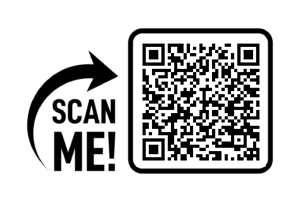
Opening Hours
Call us anytime during business hours:
Mon-Sun: 10:00 AM to 7:00 PM
Email Us
info@tvgmigration.com
In partnership with
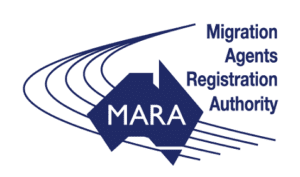

Registered with IRCC
![]()
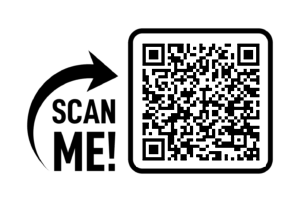
©2024. TVG Migration DMCC Copyright | All rights reserved by The Virmani Group

